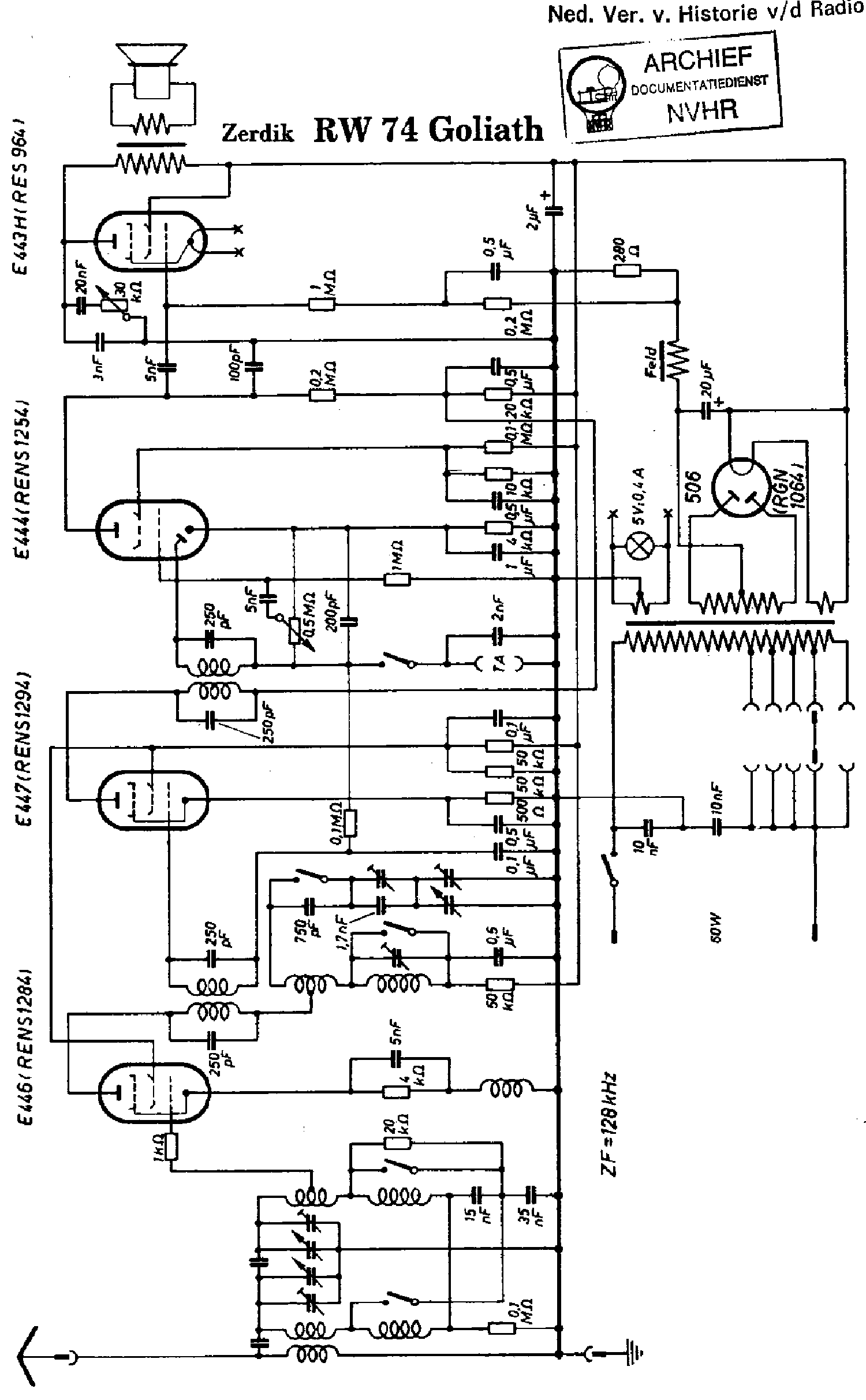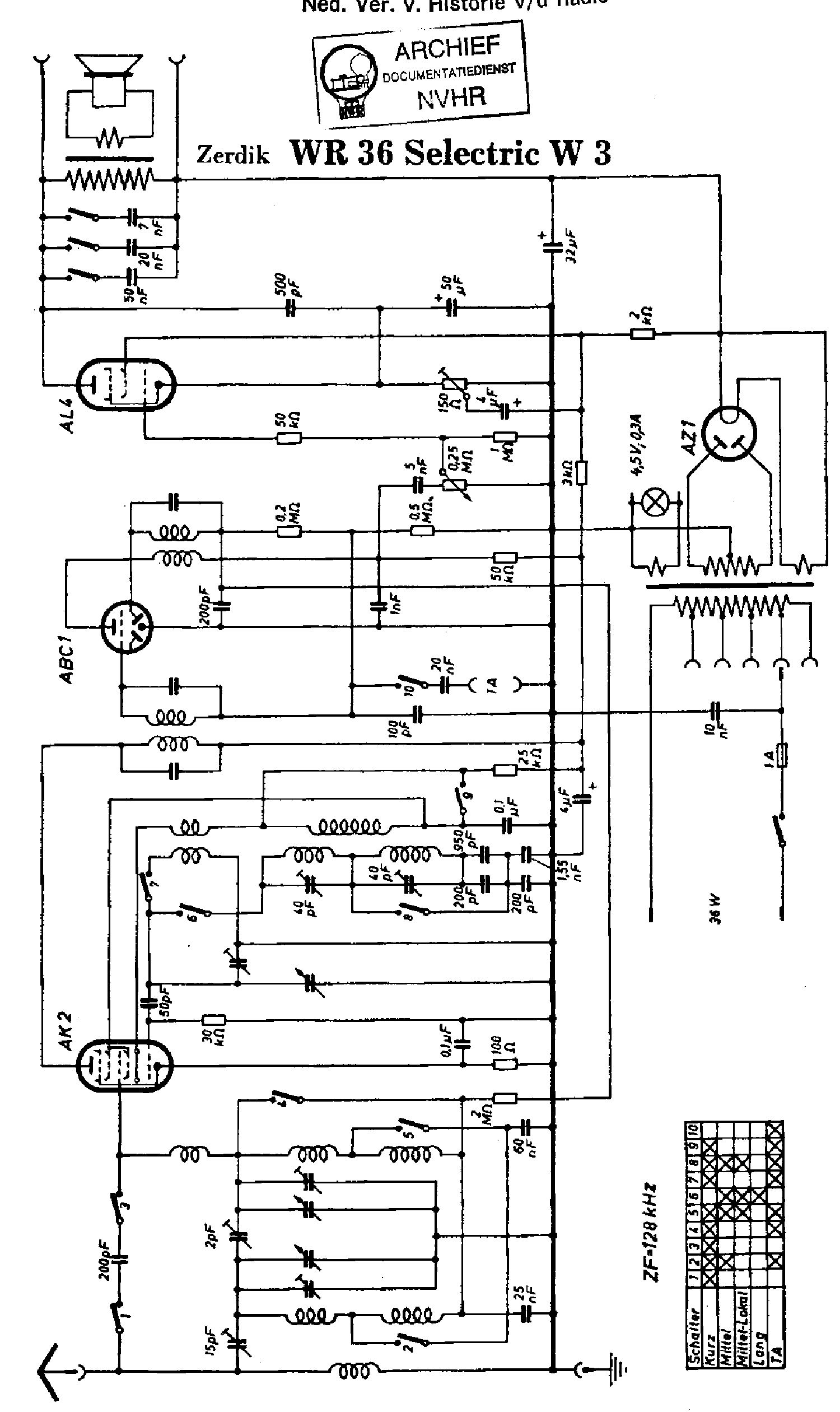Service manuals, schematics, eproms for electrical technicians
ZERDIK RW74 GOLIATH AC RECEIVER SCH

Type:  (PDF)
(PDF)
Size
45.4 KB
45.4 KB
Page
1
1
Category
AUDIO
SERVICE MANUAL
AUDIO
SERVICE MANUAL
If you get stuck in repairing a defective appliance download this repair information for help. See below.
Good luck to the repair!
Please do not offer the downloaded file for sell only use it for personal usage!
Looking for similar zerdik manual?
Good luck to the repair!
Please do not offer the downloaded file for sell only use it for personal usage!
Looking for similar zerdik manual?
Document preview [1st page]

Click on the link for free download!
Advertisements
Please tick the box below to get download link:
- Also known:
ZERDIK RW-74 AC RECEIVER RW74 GOLIATH RW 74
- If you have any question about repairing write your question to the Message board. For this no need registration.
- If the site has helped you and you also want to help others, please Upload a manual, circuit diagram or eeprom that is not yet available on the site.
Have a nice Day! - See related repair forum topics below. May be help you to repair.
Warning!
If you are not familiar with electronics, do not attempt to repair!
You could suffer a fatal electrical shock! Instead, contact your nearest service center!
Note! To open downloaded files you need acrobat reader or similar pdf reader program. In addition,
some files are archived,If you are not familiar with electronics, do not attempt to repair!
You could suffer a fatal electrical shock! Instead, contact your nearest service center!
so you need WinZip or WinRar to open that files. Also some files are djvu so you need djvu viewer to open them.
These free programs can be found on this page: needed progs
If you use opera you have to disable opera turbo function to download file!
If you cannot download this file, try it with CHROME or FIREFOX browser.
Translate this page:
Relevant AUDIO forum topics:
Sziasztok kollégák!
AZ lenne a kérdésem hogy egy sony rg30 hifit javítok lézerfej hibája van.
Rendeltem hozzá egy kss 213b fejet és elis indult vele de 10 perc után ugrálgat lejátszás közben,én hibás lézerfejre gyanakszom és azért szeretném a kollégák véleményét is kérni.Mit nézzek még át rajta?A segítségetek előreis köszönöm.
Üdv:Tibi
sziasztok:
autóerősítőbe kellett 2SB778 és 2SD 998.
A 2SB778-at a Lomex-ben megvettem.
A 2SD998-at egy hazai cégtől megrendeltem, meg is jött, TO-218 tokban.
Reklamáltam, kicserélik.
Bálint
Having downloaded the SM for the Fisher CA-M300 compact Stereo HiFi amp, realizing it is of good readable quality, I can spare myself to scan the SM and upload it, because it's exactly the same one as I have. Still I want to share a few thoughts having just repaired a set.
I would like you (the admin) to put the following under the heading "Fisher CA-M300" in "Audio service info"
The Fisher CA-M300 (built about 1981/82, for how long, I don't know, anyway, the company was then already owned by Sanyo) is a nice little, high quality built, very compact hifi stereo amp. I had the version built for Europe (220 V, 2 prong euro connector). Characteristics are: Sufficiently sized and shielded C-Core power transformer, huge (2 x 8000uF) electrolytic caps in the power supply, large extruded heatsink, bolted to big aluminium block, bolted to aluminium bottom plate, internal wiring between the different components and boards is well done, but, being of the wire-wrap type, rather unfriendly to the service (you have to disconnect 13 of them to get to the underside of the main circuit board, and you MUST _solder_ these when you put the equipment together again!).
The circuitry is quite simple, using a Sanyo STK461 hybrid power IC in the output stage, a 4558 dual opamp in the tone control preamp, and 2 Hitachi Low-Noise HA1457 in the MM phono EQ preamp.
There are 2 errors in the circuit diagrams:
In the main circuit diagram the junction of R31 (33 Ohm) and R33 (220 Ohm / 1W) has to be connected to the positive rail - as it is in reality - otherwise the circuit could not work.
In the STK461 equivalent circuit pin 12 has to be connected to the emitter of the right lower output transitor (the one opposite Q10, just like on the other side!), otherwise the circuit could not work.
The fault reported by the owner was intermittent breaks in transmission and/or high distortion in mostly the left, but sometimes also in the right channel, both with loudspeaker and headphone output. This could sometimes be remedied by slapping on the housing, but mostly not. I at once suspected a mechanical connection fault, or a hairline break of the PCB. After taking off the top cover I could make the fault disappear/reappear by pressing with a finger on different parts of the main PCB. I now suspected the relay, which is a rather small encapsulated unit, but the clear plastic hood could be taken off, exposing the contacts and mechanism. Cleaning the contacts with blotting paper wetted with contact cleaner (1st effort) did not have a lasting effect. Same result using No. 600 abrasive paper (2nd effort). Not being able to find a suitable (or better) replacement of roughly that size, and after studying the circuit diagram, finding that no safety circuitry (DC on output detection or heat sensors) was found connected to the relay activating circuit, I decided to totally remove it, bridging the contacts.
The function of the relay was just delayed connection of the output (ca. 1s) on switch on, and immediate disconnecting on switch off - to shield the user from the switch on/off noises (that are, in this special case, neither too nasty nor dangerous - a pure "comfort" function one could easily do without!
To do the job, I had to dismantle the whole thing to get to the underside of the main PCB, I mentioned that above under the term "service unfriendly", but in the same time I think the makers should be forgiven, producing such a nice super compact design! The amp is working cleanly and clear again from now on...
The amp being designed for 8 Ohm loads (in the European manual 4 Ohm is also specified) has been operating into 4 Ohm speakers (which are still quite usual here in Germany, and there are really god ones, too). If this is done at higher than usual power levels (of which the amp is quite capable), the high output currents may have damaged the relay contacts in the long run. The contacts must clearly be declared "under designed" for this kind of duty. By the way, as you can see from the circuit diagram, when both sets of stereo speakers are connected, and you run them both, they are connected in series, so there is no danger of overload, but the sound will of course be not as good (because of the lower damping and the impedance interference of the serial connection, you can hear that).
Some additional thoughts about relays in the output lines of hifi amps: Now I'm all in favor of speaker protection in the case of DC appearing on the output. The CA-M300 depends on 1.6AT (slow blow) fuses in the output lines, which would amount to 20W RMS into 8 Ohm. But fuses are bad in the output lines, they will bring distortion having a nonlinear resistance (and if they had none, how could the ever blow?). Have you ever seen a fuse wire sagging under heavy load? Relay contacts are bad, too. They should be extra heavy duty, and the relays made pluggable for ease of service and, yes, those contacts _will_ wear out, so the relays will have to be replaced. Having relays for delayed switch on / immediate switch off in the output of preamps with their very low current requirements seems OK (the contacts being of good quality, of course), but having relays in the output line of power amps just to avoid switch on/off noises seems just a superfluous nuisance... To point you to some more modern ideas for perhaps new designs of output protection avoiding relays I recommend the following web article:
http://www.geofex.com/Article_Folders/ampprot/dcprot.htm
Back to the CA-M300, if the output stage should be faulty, even one channel only, the Hybrid IC STK461 has to be replaced in total. I would recommend replacing it with the STK465, which is rated for higher voltage, because the the STK461 is running very near its maximum rating with a 230 V AC line (and at my home it's mostly 236 V AC), provided you can get these devices which are not in production anymore. Otherwise the power PCB has to be discarded and something new constructed instead, perhaps something using the ST TDA7295 or the NatSemi LM3886 from the overture series. Space would be there (even considering a Veroboard design) and sufficient heatsinking, too!
Van egy Hyundai HE-CR415MM típusu autórádióm.Sajnos a hozzá adott csatlakozó nincs meg.Esetleg tud valaki segíteni a 20 pólusu csatlakozó bekötésébe?
Similar manuals:
If you want to join us and get repairing help please sign in or sign up by completing a simple electrical test
or write your question to the Message board without registration.
You can write in English language into the forum (not only in Hungarian)!
or write your question to the Message board without registration.
You can write in English language into the forum (not only in Hungarian)!
E-Waste Reduce





